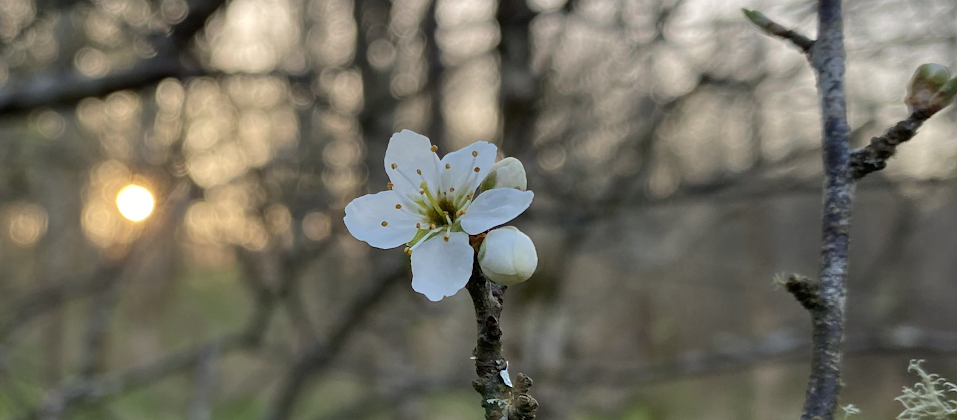Blackthorn, the Plant
The old Gaelic festival of Imbolc / Imbolg / Saint Brigid's Day marks the beginning of Spring, about halfway between the winter solstice and the spring equinox. In some places, Blackthorn, the early bloomer, and breaker of winter, will start to flower and is a thing to celebrate.
It was thought that the dread Cailleach—the divine hag of Gaelic tradition—gathered her firewood for the rest of the winter on Imbolg. The idea was that winter would last long if this day was bright and sunny as she could gather plenty of wood, if it was a rubbish day, people would rejoice as it would suggest that winter would be nearly over. Nowadays, at Blackthorn, we are just grateful for the promise of more daylight hours and not having to change the flow rates of the taps in the dark and cold!
There are so many things to admire about Blackthorn, not least its longevity. Growing for anything up to 100 years, in nature they provide a haven for birds and nectar for insects. For us, that longevity means a durable spiney branch that is essential to the working of our Thorn Tower and its ingenious eco-efficiency. The increasingly salty seawater, or brine, also helps to preserve the blackthorn bundles on the Tower, as salt seals wood - think how long shipwrecks last...
It is ‘a tree of undoubted antiquity' - in the UK, it’s one of the oldest, indigenous trees. Fossils from the early pre-glacial period show that, unlike many other species, it hasn't changed much since. With giant herbivorous dinosaurs roaming, it is easy to imagine why the spines and thorns evolved to be as long and sharp as they are. Its natural hardiness makes it ideal for a good walking stick (or an Irish shillelagh) and its bark, fruit, thorns, roots and leaves have, at times, been an essential part of the soothsayer/ witches' or druid's armoury and helped with many an ailment and even spell; its thorns were ideal as pins or brooches and sometimes weapons. Shrouded in superstition, mystery, magic, history and out-and-out sturdiness, there is so much more to the Prunus Spinosa than meets the eye...
We rely so much upon Blackthorn, the tree, for what we do. Its properties are unique - its endurance, strength, and form is what makes it sought after by those in the know for walking sticks, such as the shillelagh in Ireland, or a Kebbie in Scotland. These properties also make it so magical for us: the thorns really stretch out the surface area for our seawater to trickle down making it so much more exposed to the air, and so accelerates evaporation. The blackthorn bundles remain a bit of a mystery to us though as we do not actually know how long they will work on the tower. In Germany and Poland, the rule of thumb is 7-12 years before they are choked up with calcium sulphate (or pan scatch, the first major mineral to crystalise); but the Eastern European towers' main purpose is no longer for salt production, so the brine is left to crystallise more than we would allow. Also, we use seawater which has a vastly different balance of elements so, as with many of our conundrums at Blackthorn, time will tell... What we do know is that such is the dinosaur-esque strength of blackthorn that the thorns themselves don't actually deteriorate despite years of salty trickling. In fact, it may be that we can remove the calcium sulphate anyway and keep on going with the original bundles - suggestions on the back of a postcard please...
